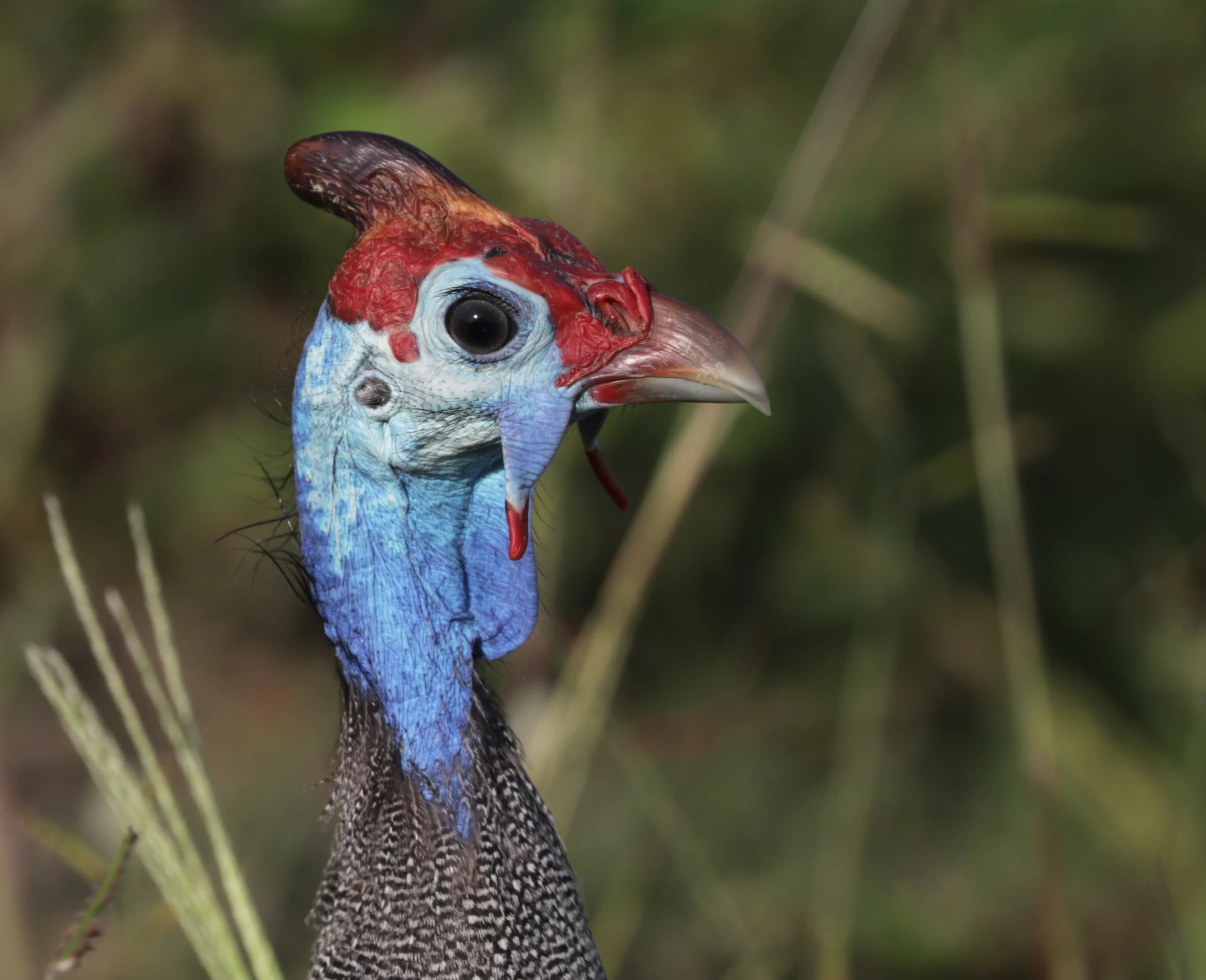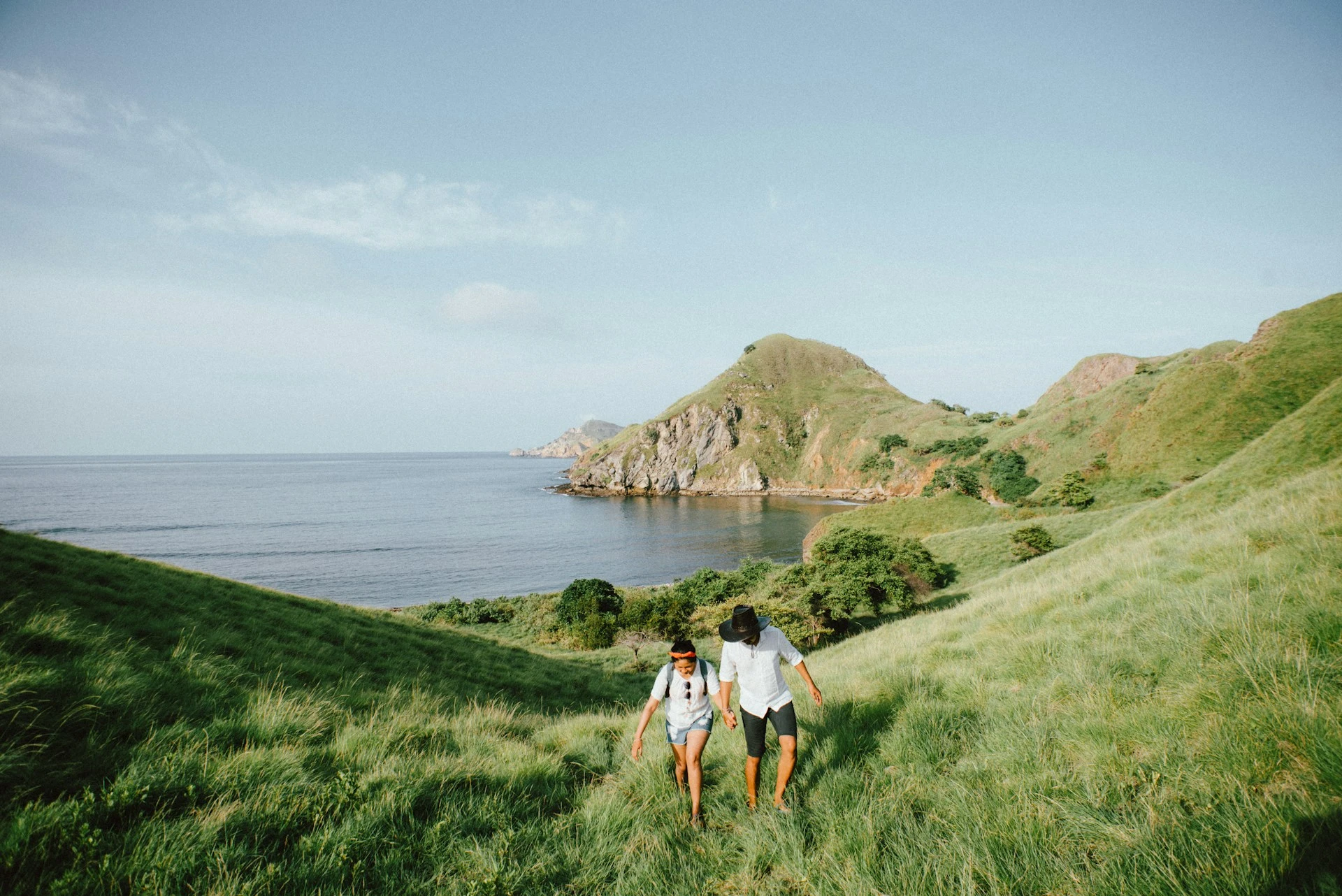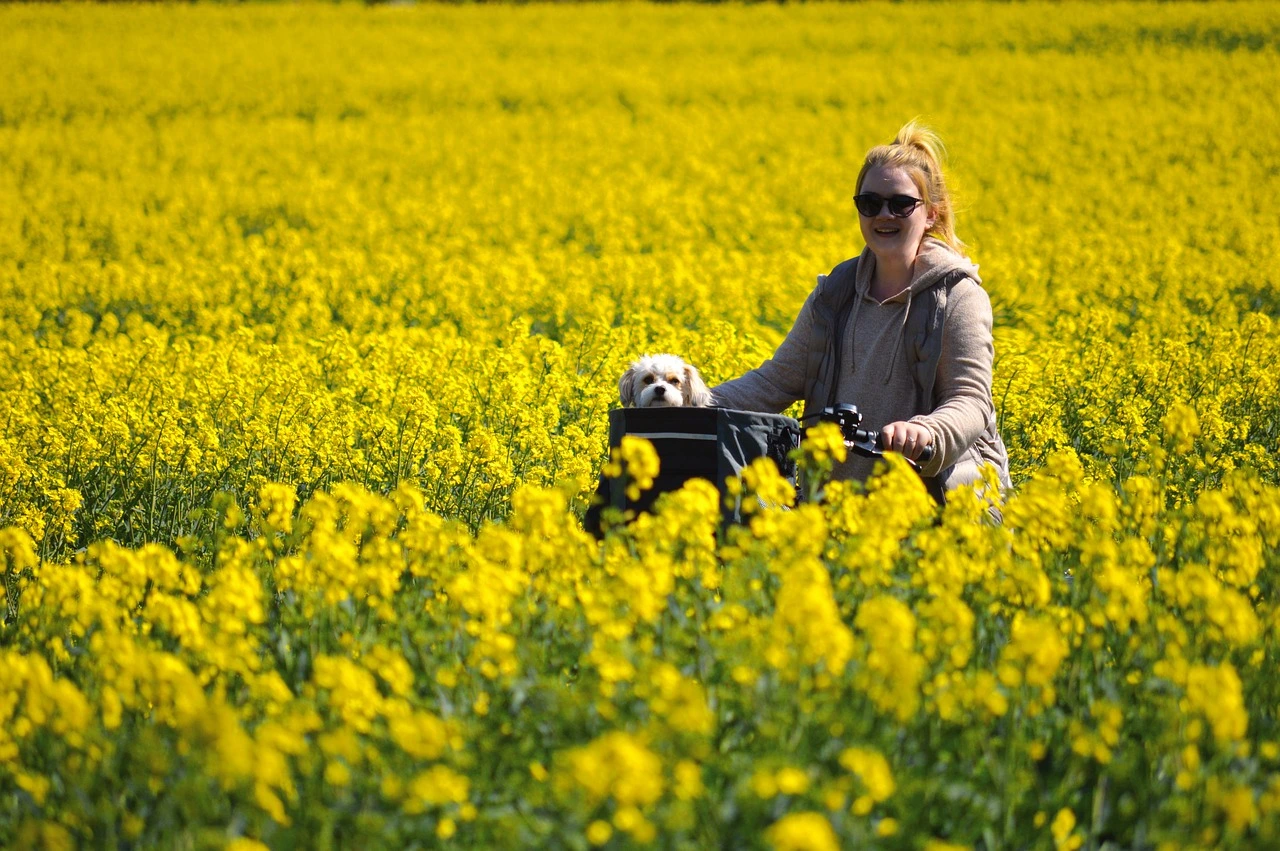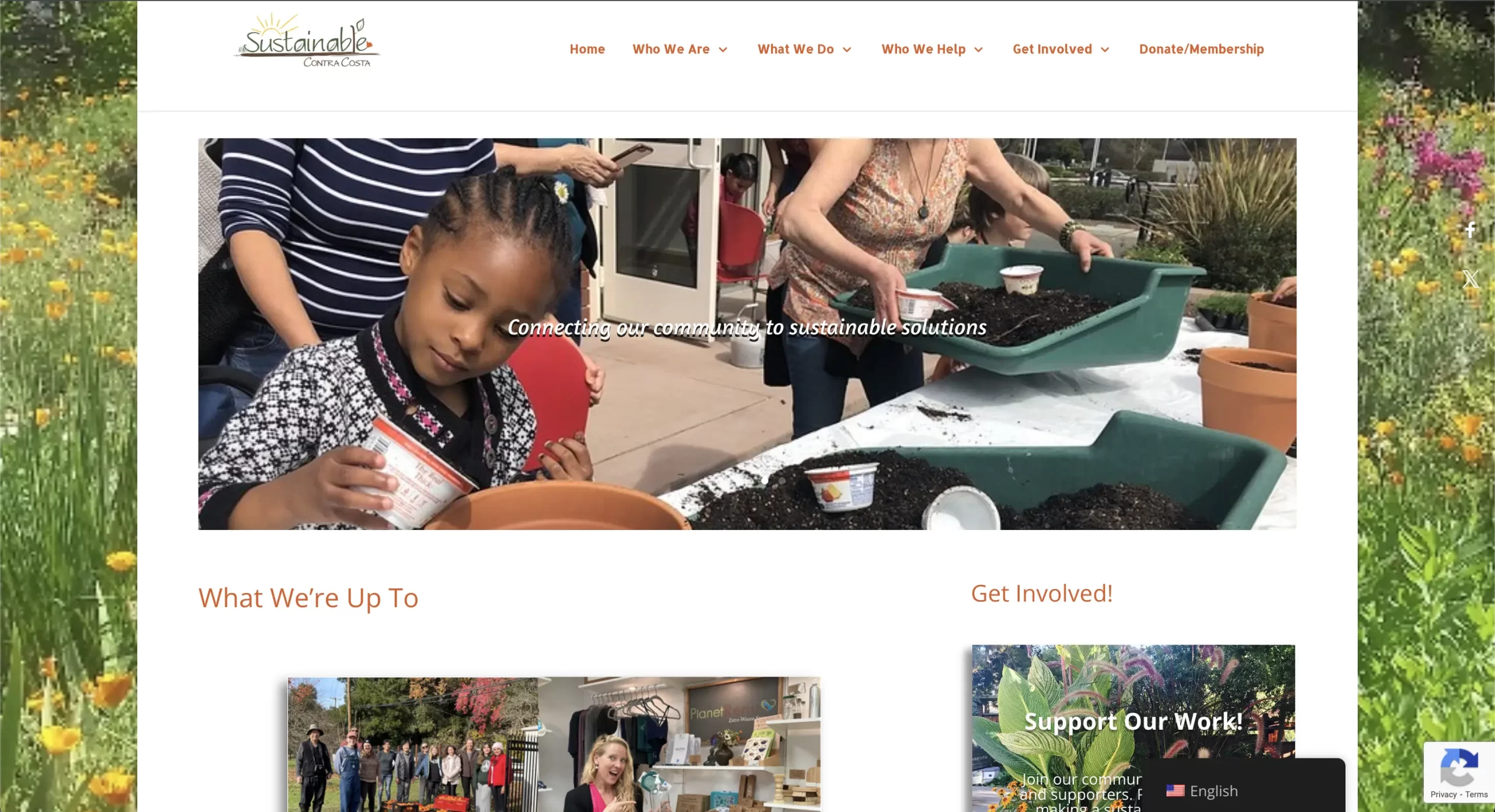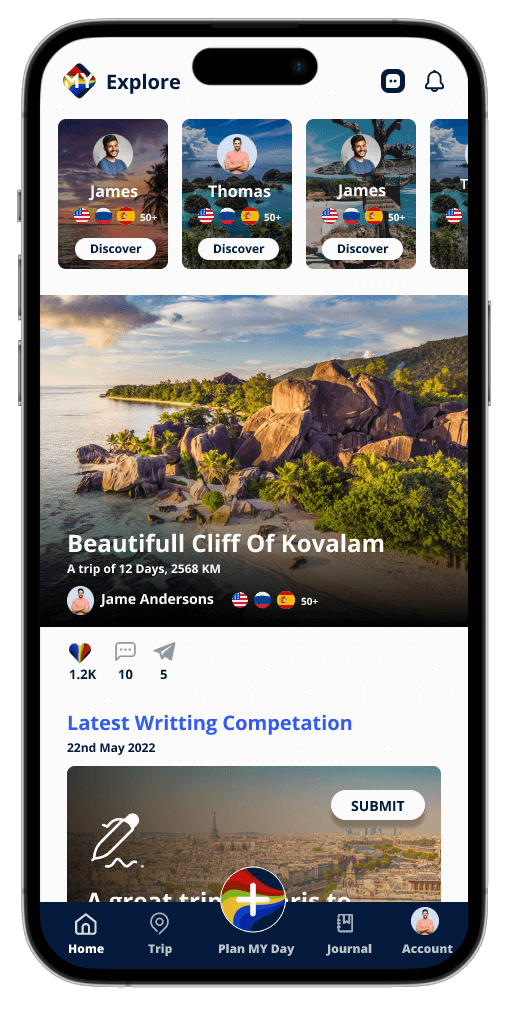Before we get started, it is important to know that Zimbabwe is a high-risk country for foreign travelers. However, that doesn’t mean you have to cancel your Zimbabwe travel plans! With the help and protection of a guide from ALLMYNE, you can find the safest way to enjoy the beauties of this African gem.
ALLMYNE guides can easily be found through our ALLMYNE app, found on the Google Play Store and Apple Store. Our pool of local guides is just one of many features the app offers. From personalized itineraries you can share with friends and family to adding certain attractions with the AI Recommender, the ALLMYNE app is a travel buddy that fits in your pocket.
Either way, we advise that you always keep a vigilant eye when traveling in Zimbabwe, as pickpockets target tourists. Now a little bit about Zimbabwe’s culture and history.
A Quick Introduction to Zimbabwe: Travel, History and More
Majority of modern-day Zimbabweans come from the Bantu migrants over 2,000 years ago. The first Zimbabweans were iron makers and agriculturists. These migrants created the Shona culture, something we will get into later.
Trade started between the Shona and the Phoenicians, and the Zulu warriors arrived in the 19th century. The Zulu warriors are the present-day Ndebele/Matabele community. The country’s name comes from the Shona words dzimba dza mabwe, meaning “house of stone.”
Shona people are well known for their stone sculptures, and the Matabele are famous for their wood carvings. In western Zimbabwe are the Vadoma people. A fourth of the Vadomas are born with ectrodactyly (missing middle toes, similar to an ostrich’s foot); and because they’re forbidden to marry outside of the tribe, the defect continues to be passed down.
Their culture is comprised of many customs and traditions. About half of Zimbabweans go to Christian churches. Aside from Christianity, the Mwari cult is the most practiced non-religion. It involves spirits and ancestral worship, as Mwari is a deity they communicate with through a cave-dwelling oracle.
Fun fact: there are sixteen recognized languages in Zimbabwe!
Zimbabwe: Customs and Traditions
Two important Zimbabwean traditions are the totems, or mitupo, and the mbira. Mitupos identify different clans. They’re usually associated with animal names that represent the clan’s social identity, like the Shumba (lion) or Mbizi (zebra).
Each Mashona clan is identified by their totem and principal praise name. This helps tell people apart if they have the same totem but are from different clans. People of the same totem are descendants of one common ancestor, and that tie is recognized across tribal boundaries.
So, a member of the Shumba totem can start the burial process of another Shumba member even if they’re in different tribes.
The mbira, on the other hand, is a musical instrument made of a wooden board with metal keys. It is used to contact deceased ancestors and tribal guardians during the Mbira ceremonies that happen in the night. At the ceremonies, the people get guidance from the spirits.
About Local Traditions
As you make your Zimbabwe travel plans, it’s important to know about the importance of the makishi dancers and the mukanda. It is forbidden to ask who is behind the mask of a makishi dancer. They are spirits representing ancestors and appear at the mukunda, which is the circumcision ceremony, before returning immediately to their graves.
In some countries, the idea of a circumcision ceremony sounds distasteful. However, it is a rite of passage for boys entering manhood.
During the dry season from May to October, the makishi travel from village to village to announce the coming of the mukanda. The night before the ceremony, the boys eat their last meal of food and millet beer.
From there, the medicine man, N’anga Mukanda, puts protective medicine and clay on the boys prior to them being escorted to katateveje, “the place of death.” At the time of the ritual itself, some makishi stay behind in the villages to keep the mothers from interfering, as African drums play loudly to drown out the noises.
After the ceremony, the boys are taken to an area away from the village for a few months and can only communicate with the village, through song.
Elder guardians tend to the boys, and carved pegs surround their camp to keep them safe from evil spirits. During this time, the boys are taught obedience, discipline, woodcarving, mask weaving, basketry, and tusoma, iconographic writing.
There are many ways you can learn about the history of Zimbabwe, travel routes you can take, and the cultural traditions that make up its society. Besides safaris and game hunts, there are dozens of monuments and villages to behold.
We’ve gathered three experiences from each of the eleven Zimbabwean provinces. Ready to add some stops to your African vacation? Let’s go!
Bulawayo
There are tons of UNESCO World Heritage Sites in Zimbabwe, which should be one of many reasons you should visit.
The Khami Ruins National Monument is the first site on our list and is a series of terraced stone ruins. The stonewall structures that are common at monumental ruins in Zimbabwe are modified because they aren’t free standing.
Rather, they are a part of the hill, forming stonewalled platforms. This means that individual blocks are balanced on each other without the use of cement! The neater blocks were put on the outer layer, while the coarser chunks were used behind to fill in the gaps.
The second largest stone-built monument in Zimbabwe, these ruins were the capital of the Torwa dynasty and the apparent location of Chief Mambo’s home. The paths within the site itself are a great way to experience Zimbabwean history outdoors.
The location is historically important because it has survived treasure hunters despite it being along the water. There are many platforms you can look at, including:
- The Main Platform: Decorated tiers mark the front of the royal house, and the open front area might have been a Royal Court. Portions of the main passageways were covered by roofs.
- The Cross Platform: This platform has evidence of at least three large mud-built huts called daga huts. It is best known for the Dominican Cross made from loose bricks of granite.
- The Precipice Platform: Approaching the Khami Dam, there is a narrow path along the Khami River that leads to the Precipice Platform, the largest of the stone platforms. The checkered wall is the longest of this type in Zimbabwe and was most likely a place for rituals.
- The Passage Platform: Further along the path that takes you to the Precipice Platform, you will find two adjoining, semi-circular platforms. There is a large house and animal enclosure on this platform. Due to its size, it is assumed that this housed one of the elite officials of the state.
Travel tips: There is a small entry fee to access the ruins and a place to park your car. There are also tons of concrete tables and benches under shady trees for picnics. This is a great place for families to enjoy, and pathways are well-kept.
Our next highlight of Bulawayo is located in Centenary Park. The Natural History Museum was originally the Natural Museum of Zimbabwe until the natural science collections moved to the location in 1982.
Cecil Rhodes, a controversial figure in Zimbabwean history, was requested by the Rhodesia Scientific Board to create The Rhodesia Museum for their growing collection of minerals in 1902, which set the grounds for the Natural History Museum.
It is the fourth biggest museum in Africa and is a circular building with nine public galleries, a lecture hall, a cafeteria, and eight research departments:
- Arachnology and invertebrates
- Entomology,
- Ornithology,
- Mammalogy,
- Herpetology,
- Ichthyology,
- Paleontology and geology,
- and Archaeology.
One of five in the National Museums and Monuments of Zimbabwe, the Natural History Museum is under the directorship of the western Region of Zimbabwe.
The museum’s ground floor has the second largest mounted African elephant, a Dodo egg, and one of the first Coelacanth, a prehistoric fish species, ever caught.
There is a huge display of mineral wealth in the geology gallery, and the impression of Syntarsus, a Triassic Zimbabwean dinosaur, in the paleontology section is something to behold.
The museum is open every day from 9 a.m. to 5 p.m. and is located on the corner of Park Road and Leopold Takawira Avenue.
International children entrance fees are $5 USD, and international adults can enter for $10 USD. Donations of any kind help with projects like fixing the roof, adding new displays, and replacing the carpets.
The last place to see in Bulawayo is another UNESCO World Heritage Site.
Zimbabwe’s oldest national park, the Matobo National Park has 3,000 well-preserved rock paintings (Khoekhoe paintings). Inhabited by the San Bushmen roughly 2,000 years ago, hundreds of artifacts have been recovered by archaeologists in and around the caves.
The Matobo Hills are massive granite hills formed by river erosion and are associated with folklore and traditions. Some believe it’s the dwelling place of the spirits of the Ndebele chiefs. The park is famous for its breeding of both white and black rhinos.
So, if you want to catch these giant members of the Big Five, then Matobo National Park is the place to be. The Maleme Dam nearby is a great place for camping and picnicking, and you’re sure to see loads of bushbucks while visiting the park.
There is an area with a scenic viewpoint called “World’s View” in this park. It has the location of Cecil John Rhodes’ and Leander Starr Jameson’s burials. The aforementioned Rhodes was the former Prime Minister of the Cape Colony during the 1890s.
Both of these men were racially discriminatory colonizers of the natives during their time in Zimbabwe and Zambia.
Travel tips: The road is tarred up to the park along with the main roads inside the park. However, roads off of the main ones are dirt, so have a 4WD vehicle if you go during the wet season.
There are lodging options inside the park, and the entry fee to World’s View and the Pomongwe Caves is $3 per person.
Eastern Highlands
The first of three cultural experiences you should check out the Vumba Botanical Garden, a must visit in your Zimbabwe travel itinerary.
Located in the Vumba Mountains, also known as the “Mountains of the Mist,” this is one of many great destinations for birdwatching. It is home to indigenous ferns and orchids along with large amounts of Samango monkeys.
The government bought the property from F. J. Taylor in 1957, who had originally called it Manchester Park. Tourists would visit his landscaped garden during and after WWII. It was proclaimed a national park in 1958.
Travel tips: There are caravan sites, camp sites, lodges, a tea room, and a swimming pool around the area. Roads are tarred up to Cloudlands then turns into a gravel road for about 15 km (~9 miles) to the park.
Our next place is one of many waterfalls in Zimbabwe. The Mutarazi Falls are the highest in Zimbabwe, second highest in Africa, and the 17th highest in the world!
Close to the Pungwe Falls (a tiered waterfall that winds through the mountainside), the Mutarazi Falls are located in the Mutarazi National Park adjacent to Nyanga National Park’s southern border.
The river flows into the Honde Valley, and it flows with the most force after rain between February and April.
Travel tips: The skywalk and skyline are the two most popular activities here, so be prepared for a potentially longer wait during peak seasons. The park is open year-round from 6 a.m. to 6 p.m., and there is an entrance fee to access both of the falls.
To round out our stop in the Eastern Highlands, we are going to take a look at the previously mentioned Nyanga National Park.
Over 100,000 acres, the Nyanga National Park has Zimbabwe’s highest peak, Mt. Nyangami. This mountain is 8,504 feet tall and a three-hour climb for adrenaline junkies. I think I’ll just keep the fire going down at the base camp.
Migratory birds can be seen between November and April, and this is an amazing location to go fly fishing. You can get rainbow trout in the Mare, Rhodes, Gulliver, and Purdon Lakes. It is home to zebras, waterbucks, kudu, wildebeest, leopards, and hyenas.
There can even be a rare lion appearance that has come in from Mozambique.
Travel tips: You can arrive by road from Harare or Mutare or land at the aerodrome in Mutare and transfer to the park from there.
Entrance for international visitors is $10 for conservation fees and $10 for vehicle entry fees. Lodgings on-site accommodate any budget!
Harare
One of the most important places to see in Harare is the National Heroes Acre. This 57-acre site was built in 1981, a year after Zimbabwe’s independence, with the assistance of North Korea and gives some history of Zimbabwe.
The memorial commemorates the Patriotic Front guerillas killed during the Rhodesian Bush War. The museum near the memorial has the in-depth history of the Zimbabwean resistance movement, and the memorial is called the Tomb of the Unknown Soldier because those who sacrificed their lives have had their remains scattered all over the nation. Tourists pay $5 for entry to the site.
The second must-visit stop is one of the few large green spaces open to the public in Zimbabwe, travel here is non-negotiable for nature lovers. The Mukuvisi Woodlands contribute to environmental education of Zimbabweans through an Eco-Schools Program.
It is the only access for some to the miombo woodlands. A lease agreement has been signed to protect these woodlands from the Harare Municipality—who want to build suburbs on the property—until 2090.
It is open daily from 8 a.m. to 5 p.m, and children aged 5 to 12 get in for $4 while adults’ admission fee is $5.
Travel tips: Many people recommend the horse safaris that let you see zebras, impalas, and giraffes, so take advantage of that opportunity! Bring your own snacks because on-site options can be a bit expensive. Your best bet is to visit during feed times—giraffes are fed at 2 p.m.! Also, many people say that you should leave a full day to visit so you can take part in all the activities offered.
Finally, we have the Tsindi Monument. Formerly the Lekkerwater Ruins, the Tsindi Monument is similar to the Great Zimbabwe ruins we will get into later.
Once occupied by the Nhowe people for about 250 years, this land was given to the Mangwende Chiefs by the Rozvi overlords. The first walls of the settlement were built some time in the 1200s; and within those enclosures, daga huts were built for religious purposes by spirit mediums in 1600s and 1700s.
Fun fact: the ruins were actually excavated by Sheila Rudd in 1963. Through her archaeological endeavors and those to follow, they found evidence of three stages of life based off of the building methods and types of pottery: the Late Early Iron Age, the Later Iron Age, and the Late Iron Age.
Hwange, Mana Pools, and Mashonaland Central
We’ve lumped these three regions into one because they each have one main feature to highlight as far as cultural immersion goes.
For Hwange, we have, of course, the Hwange National Park. This is the home of the famous “Elephant Express,” a 3-hour long trip of only 22 passengers at a time. This is the largest park in Zimbabwe, clocking in at over 14,000 km2.
Besides the 40,000+ tusker elephants, there are over 100 species of animals, 413 species of birds, and 1000+ species of trees and shrubs. This is the hotspot to see all Big Five, too (a.k.a. lions, leopards, elephants, buffalo, and rhinos).
The dry season is the best time to visit for amazing views of wildlife because many of them flock to the waterholes, especially the elephants.
So, make sure you plan to go between July and October! If you’re a bird watching fiend, then you’ll want to go from November to April to catch all the migratory birds from Northern Africa and Europe.
Fun fact: This was once the hunting grounds for the Ndebele warrior-king Mzilikazi, whose son we will be talking about a little later on, and the park was named after a local Nhwanza chief.
The Mana Pools National Park (obviously in Mana Pools) is another UNESCO World Heritage Site on the long list of ones in Zimbabwe. This park is famous for its canoe safaris in the Zambezi River.
You can walk unaccompanied and fully immerse yourself in the wildlife because of its high visibility. However, you do need a permit obtained at the tourist office in order to do so.
Walking safaris are offered by park staff who take visitors on a 3-day hike in the wild. You’ll need to be fit and have your own food/toiletries. You book a day prior at the tourist office and pay after the walk; the prices are per hour per person.
Finally, we have the Domboshava Caves in Mashonaland Central. Similar to Matobo, these caves have San rock art on the walls. You can learn about the San people’s culture at the Domboshava Interpretive Center that has many exciting exhibits and displays. The brown-colored paintings date back roughly 13,000 years ago, and the black-colored paintings are about 2,000 years old. The evidence of the Stone Age occupation was found from quartz chips on the ground.
Fun fact: Domboshava literally means “the red rock.”
Travel tips: Wear comfortable shoes for hiking. Also, bring along water, snacks, sunscreen, and bug repellent.
Be sure to respect the caves and the natural surroundings by properly disposing of your trash. Furthermore, lightning strikes are extremely common in this area during the rain season, so avoid venturing out during that time as even taking shelter under a rocky overhang can be dangerous.
Mashonaland West
In Mashonaland West, we have two parks for you and another set of caves.
First off is the Darwendale Recreational Park, ¾ of which is Lake Manyame. The lake is a good place to catch hunyani salmon, Mozambican bream, and bass fish. Conservation fees are $3/adult.
Travel tips: During the summer (September to March), wear cool, comfortable clothing, and bring sun hats and sunscreen.
In winter and autumn (April to August), warmer clothing is the way to go, especially for the colder nights. Avoid bright colored clothing like red, yellow, and bright green. Also, BEWARE of crocodiles along the shore and hippos!
Next, we have the Chinhoyi Caves. Unfortunately, the tunnels and caverns are all slowly collapsing. The traditional name of the most exciting feature at the caves is Chirorodziva, which means “Pool of the Fallen.” Also called the “Wonder Hole,” this large cavern exists because of a collapsed roof in the caves.
The walls drop down vertically for 150 feet to the sleeping pool where people go scuba diving. The name of this pool comes from the 1830s legend where the Nguni tribe came upon a group of Shona tribe members living near the Caves and flung them into the pool. The oral tradition says that their bones are still covering the bottom of the pool.
(Creepy, right?) Chinhoyi was actually a Headman who defeated the Nyamakwere outlaws. He used the caves as the Mashone Chief to keep his people safe. You can explore the caves as a tourist for just $10 a person.
Also in Mashonaland West is the Matusadona National Park. Proclaimed a non-hunting area in 1958, the Matusadona National Park is an Intensive Protection Zone. It is home to relocated black rhinos and is another one of few parks where you can see all of the Big Five.
Located along the southern shore of Lake Kariba, one of the four largest man-made lakes in the world and the second largest in Africa, this is a popular fishing destination.
The damming project that created this lake is how Zambezi gets its electricity. You will also most likely see Nile crocodiles while you’re there!
Travel tips: The park is rarely crowded, but their high season is from August to September. The best time of year to visit is May to October because there are a lot of mosquitoes during the humid months of November to March. They have plans right now of how they’re reviving Matusadona that you can check out here.
Masvingo
We are finally in the province of the Great Zimbabwe Monument. Understandably a UNESCO World Heritage Site, this was the supposed capital of the Queen of Sheba according to legends. During the Late Iron Age, this was the capital of the Kingdom of Zimbabwe.
It was the royal palace for the Zimbabwean monarchy and was a seat of political power. It was built by the Shonas and has many of the giant, mortarless walls we talked about before.
Due to deforestation, the area was abandoned in 1450; however, archaeological excavations found evidence of long-standing tade. Porcelain from China, glass beads from Persia, and gold from Kilwa were all unearthed. The ruins are divided up into three parts:
- Hill Ruins: Considered a “royal city,” the western enclosure here is assumed to have been the home of successive chiefs, and the eastern enclosure was the place for rituals. This is evident by the six posts outside the eastern enclosure with birds on top of them. These Zimbabwe Birds are on the national flag and coats of arms. There is only one bird of eight unearthed that isn’t in Zimbabwe. It’s at Cecil Rhodes’ Groot Schuur home in Cape Town. Each bird is made of soapstone.
- Great Enclosure: In the shape of a rounded oval, the enclosure is built of cut granite blocks and has many daga huts along with a high tower and community area. There are walls within the community area to mark off where each family’s property was.
- Valley Ruins: These are the ruins of homes that have been scattered all throughout the valley. Most are constructed with bricks and dry-stone walls for insulation. They’re clear representations of the Stone Age because of their checkered and chevron wall patterns.
Travel tips: It’s a $15 entrance fee for adult tourists and $8 fee for children, as of March 2024. If you want to see all three parts along with the museum, make sure to leave a full day to explore.
Not many people visit, so it’s very uncrowded, making it a great place for families to learn about Zimbabwe, travel without rushing, and .
There is a picnic area for those who want to bring their own food. You can also enjoy a traditional maize dish called sadza while there if you’d like. The best time to arrive is around the opening hours of 8 or 9 a.m. to avoid the hot sun that comes during midday. Bring sunscreen, water, and a wide-brimmed hat.
The Chesvingo Cultural Village is unlike any of the other experiences on this list so far.
The Karangas of the Shona people have preserved their culture and are a beautiful example of community-based tourism. They’re well known for weeding and herding livestock and will treat you to a meal for a small price. You can see more about what they’re up to here on their Facebook page.
Rounding out our three highlights in Masvingo is the Gonarezhou National Park. This park is part of the Greater Limpopo Transfrontier Park, a large conservation area established in 2002. Named “The Place of Elephants,” this park is home to over 11,500 elephants.
Of the numerous species of birds, large and small mammals, fish, reptiles, and amphibians, about fifteen are vulnerable, six endangered, and five critically endangered. This is Zimbabwe’s second largest National Park and spans the area between the Save and Mwenezi Rivers.
It’s also home to the Chilojo Cliffs and located along the Mozambique border. The park was originally established as a game reserve in 1934.
But following the first wave of black rhinos going extinct and being reintroduced from the 1940s to the 1960s and 70s, Gonarezhou became a National Park, nearly 20 years prior to the second local extinction of the black rhinos.
Travel tips: The best time to visit if you want to go camping is between April and September. September to November has really high daytime temperatures, but the water holes are always crowded for great animal viewing.
Access for tourists to the park is limited during the hot-wet season of November to March because the more remote camps in the park are closed. No tourists are allowed from January 10th to March 1st of every year.
When it comes to the elephants, they have become a bit aggressive because of the difficult circumstances they’ve had to endure throughout their lives. Thus, they recommend you follow these key guidelines:
- Give the elephants space. Do not honk your horn at them or push them.
- Make sure you have a clear exit to move away if a situation turns in a negative direction.
- Remain calm. Watch the elephant’s body language at all times.
Matabeleland North
Moving right along, we are now into the Matabeleland North province of Zimbabwe, travel to this area is a must if you want to experience the best parts of the House of Stone. Here you can find one of the seven natural wonders of the world, but more on that in a minute!
The Zambezi National Park, located next to the mysterious natural wonder of the world, has lodges overlooking the Zambezi River. It’s a small park, but you can see elephants, buffalo, and antelope regularly.
You might even be lucky enough to catch a rare glimpse of a giraffe or zebra on your trip. As with a lot of the other parks, the dry season of April to October has the animals gathering to the river, making it an extremely busy place to be, especially on the weekends. So, keep that in mind when you’re booking!
Now for the mysterious wonder. The Victoria Falls have easily earned their title as one of the Seven Natural Wonders of the World.
Nicknamed Mosi-oa-tunya or “the smoke that thunders,” you can experience these falls from above in a helicopter, through them in a white-water raft, or along the riverbank trails on horseback. The falls were named after Queen Victoria by Dr. David Livingstone in 1855, and they border Zimbabwe and Zambia. From the Victoria Falls Bridge, you can bungee jump down the 364 foot drop during the dry season. (Sign me up!) During its peak season, it has the largest volume of falling water. The Victoria Falls Bridge came to be because Cecil John Rhodes wanted Africa to be connected from “Cape-to-Cairo” with a continuous railway. Thus, the bridge crosses the enormous chasm between Livingstone in Zambia and Victoria Falls in Zimbabwe.
If the bungee jump isn’t extreme enough for you, you should check out the Devil’s Pool. One of many rock pools formed from thousands of years of erosion, the Devil’s Pool has a close-up view of the sheer drop off the side of the Falls.
To access it, you walk for a good bit before swimming in the Zambezi to get to the pool. Before you’re sucked into the swimming hole, you leap into the pool. The river’s force will push you right to the edge of the rock lip, allowing you to look over the edge.
This is only accessible from August to January with a guide! So, use the ALLMYNE app to get in contact with one of our very own Zimbabwean travel guides and add “Victoria Falls” as one of the attractions you want to see!
Finally, we have the KoMpisi Cultural Village. Not much can be found on this place, but the two videos I discovered should be more than enough to explain what kind of atmosphere this place has. It is a must-see for any adventures in Zimbabwe.
The KoMpisi village is a sacred place to learn isintu. This is the way of life for people who follow ubuntu. Ubuntu is the foundational philosophy of humanity to others described beautifully as “I am what I am because of who we all are.”
This first video shows the village hosting a camp for a learning school, and the second one is an interview with one of the tribal elders, who has quite the sense of humor!
Matabeleland South
With only two more provinces in our Zimbabwe travel guide, let us know in the comments which places have piqued your interest this far!
This next stop is a huge hit for history buffs. The Greater Mapungubwe Transfrontier Conservation Area near the Shashe and Limpopo Rivers is the location for The Lost City at Mapungubwe Hill.
If history isn’t your thing, you can enjoy picnic sites or catch sight of the Tour de Tuli, a cycling tournament that happens in some form every year and goes through three countries: Botswana, Zimbabwe, and South Africa! You can see a map of what the conservation areas include at this link.
The Threeways Safari is an overnight camp along the Bubi River and conducts hunting safaris for Cape buffalo and leopards. The hunts are tailored to what the client is looking for and is a great place to relax along the river. There are six chalets for lodging, and it’s BYOB!
Finally, we have the Nottingham Estates. This is a privately-owned citrus and ecotourism estate near the Beit Bridge along the Limpopo River.
The 4-star lodge there is the Nottingham Fishing Retreat by the Mashili Chokwe Dam. From there, you can see crocodiles, birds, and hippos.
It’s a great place to fish for bream and bass. Also, you’re likely to see elephants playing in the excess fruit pulp! You can see their rates here. If you’re looking for something perfect for family gatherings, we recommend the Kudaland Lodge, whose rates can be found here.
Midlands
Here we are, the last three stops in our Zimbabwe travel guide.
The first spot to see is the Antelope Park. This park is just one of many game parks in Zimbabwe.
The 3,000 acres were bought by Andrew and Wendy Conolly in 1987 back when it was just a small tea room with eight lions! According to their website, “Over the past 10 years, Antelope Park and its associated businesses and shareholders have contributed over US$2 million to community and wildlife conservation programmes.”
Activities are offered at the park, but none are available after 4:30 p.m.
You can go on lion education tours, interact with elephants, or even learn about African snakes while meeting their resident python, Aphrodite! You can even have events like conferences and weddings at the park.
Next is the Naletale Monument. This is another set of giant stone walls in Zimbabwe, however it is the most decorated of the 300 in the country.
The remarkable wall designs include chevrons, cords, colored bands, and checkers. The ruins have a wonderful view of the Somabula flats, and you can even find cabbage trees and aloes growing out of the walls.
Last, but certainly not least, is the Zimbabwe Military Museum.
An interesting Zimbabwe travel fact about this museum: Outside this museum are statues of the Chimurenga Mbuya Nehanda and Sekuru Kaguvi along with the Ndebele King Lobengula.
Nehanda and Kaguvi were mhondoro mediums who, along with Mukwati in Matabeleland, led the resistance against Cecil John Rhodes and the British South Africa Company in the 1890s until their capture.
King Lobengula is the son of King Mzilikazi and was the second and last king of the Ndebele people. He led the fight against the Christian soldiers who invaded the Ndebele state.
The Ndebele soldiers died, as their spears were useless against the British Maxim machine guns. Lobengula fled because the Ndebele believed that people were only defeated when their kind was captured.
A captured kind meant that there was no chance to resurrect that kingship in the future. So, the Ndebele say, even to this day, that they were never truly defeated. The attack on Mashonaland was from the British South Africa Company to find gold, gold that was confirmed to not be there prior to the attacks.
Located in Gweru, a former gold mining village, this is the only museum involving military research and exhibits. It opened in 1974 as the Midlands Museum but got its new name in 1985. It portrays the history of the Army, Air Force, and Police.
You can see extensive military there including aircraft, uniforms, and equipment. The museum isn’t as developed as the others we’ve covered, so please consider donating to them!
Ready to Explore Zimbabwe Your Way?
Well, that wraps up all we’ve got on Zimbabwe. Let us know in the comments if you’ve ever been! What was your favorite sight to see? Any that we missed? We are slowly working toward our launch of the ALLMYNE app, so stay posted on all of our platforms for what is to come!
Download the ALLMYNE app from the APPLE STORE or GOOGLE PLAY to seamlessly plan, capture, and share your travel journey with a global community of fellow explorers. Upgrade to our PRO subscriber level for even more perks, including audio recording in your journal, AI-powered location suggestions tailored to your interests, unlimited trip locations, and unlimited storage for all your travel memories.
Download the ALLMYNE app now – the ultimate travel companion to enhance every step of your journey!
